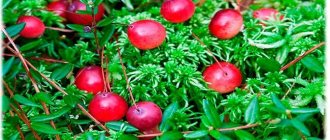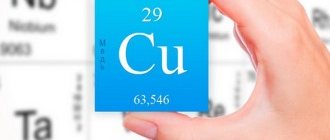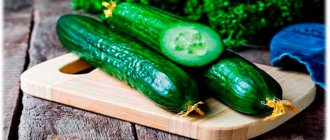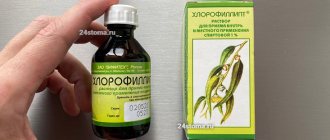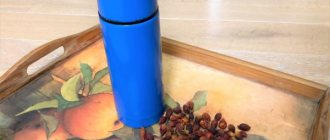Author
Anna Shelestun
Checked by an expert
Tatyana Eliseeva
Our ancestors used echinacea to treat scarlet fever, malaria, diphtheria, and toothache. The plant's popularity began to fade in the 20th century after the advent of antibiotics, but has now faded again thanks to the trend towards organic food. Today people use it to strengthen the immune system, reduce sore throat, and against runny nose and cough. However, scientists have proven that the extract helps not only against colds and flu.
The calorie content of Echinacea is almost zero, but sweetened syrups can contain more than 200 kcal per 100 g. The plant comes in three types - narrow-leaved, pale and purple. All varieties have a common name, but different activity profiles. Their therapeutic effect is provided by polysaccharides, glycoproteins, alkamides, flavonoids and other substances. The roots contain more oils, and the aerial parts contain useful compounds for activating the immune system.
Plant composition
The chemical composition of Echinacea is very rich. The herb is based on various substances necessary for the proper functioning of organs and systems. For this reason, the plant has found wide application in many areas. For medicinal purposes, all its parts are used - flower, stem, root, leaves.
Echinacea contains:
- Flavonoids. They have an anti-inflammatory effect and are indispensable for the treatment of various pathologies, including malignant tumors. The composition contains rutin and quercetin - these are important elements for normalizing cardiovascular activity.
- Polysaccharides. They are a source of energy and protect tissues and organs from mechanical damage.
- Saponins. They have fungicidal and antioxidant activity.
- Hydroxycinnamic acids. Improves body function and has an antiviral effect.
- Phytosterols. They are hormone-like compounds that perform essential functions for normal life.
- Inulin. Restores intestinal microflora and carbohydrate-lipid metabolism.
- Phenolcarboxylic acids. They have antipyretic, anti-inflammatory, and disinfectant properties. Helps relieve pain from neuralgia and rheumatism.
- Betaine. Protects the liver from various negative environmental factors.
The medicinal plant also contains: enzymes, amino acids, phenolic compounds, trace elements, oils, fatty acids, antioxidants and tannins.
Price for Echinacea purpurea
You can buy such an effective drug for immunity as Echinacea at any pharmacy. It is also easy to order the product in the online catalog of a specialized online store. The cost of medicine in St. Petersburg on average varies from 30 to 100 rubles. The price of Echinacea depends on the form of release, the manufacturing company and the policy of the pharmacy. The shelf life of the medicine is 2 years. Approximate prices for purple echinacea in Moscow are presented in the table:
| Release form of Echinacea | Cost in rubles |
| Sachet No. 10 | 300 |
| Tincture 100 ml | 160 |
| Tablets 205 mg (100 pcs.) | 130 |
| Solution for injection 2.2 ml (5 pcs.) | 866 |
| Syrup 50 ml | 140 |
Types of medicinal compositions from Echinacea
Based on the herb, various medicinal products are made that help fight diseases and strengthen the immune system, these are:
- Infusion - improves the hematopoietic system and helps restore damaged tissue. It is used topically in the form of lotions and compresses.
- Tincture - an alcohol composition helps in the fight against stress and normalizes cognitive functions. Used internally.
- The decoction strengthens the immune system, has a tonic effect, and suppresses the symptoms of stress. Used internally before meals.
- Tea is an excellent remedy for increasing the body's defenses and treating dermatological conditions. Can be used as therapy and prevention. For better taste and beneficial properties, you can add honey.
- Ointment - effective against wounds, burns, acne. It’s easy to prepare; dry herbs are mixed with a fatty base and used for their intended purpose.
- The oil is widely used in cosmetology. Also used to copy signs of gastrointestinal ulcerative pathology.
Echinacea preparations
Medicines based on Echinacea are widely used in medicine. The plant is often included in dietary supplements. Products containing the purple cone are sold in pharmacies in various forms - capsules, alcohol tincture, dried flowers, drops, teas, tablets, lozenges, powders. The most popular medications with Echinacea are:
- Immunal . Herbal product. The medicine is prescribed to prevent colds, strengthen the immune system and as an adjunct to long-term use of antibiotics. Children (from 12 years old) and adults can take Immunal 2.5 ml of solution or 1 tablet 3 times a day. When using the medicine, adverse reactions may occur: skin rash, shortness of breath, itching.
- Estifan . The medicine has anti-inflammatory and immunomodulatory effects. The drug is prescribed as an adjunct to long-term antibiotic therapy. The dose and duration of use should be determined by a specialist. Rarely, when taking Estifan, the following may occur: vomiting, nausea, insomnia.
- What is the safest transport during an epidemic?
- Cream for a milk cake - how to prepare custard at home, with gelatin, butter or semolina
- 6 Signs of Vitamin D Deficiency in Your Body
What are the benefits of Echinacea flowers?
The benefits of a medicinal plant for the human body are as follows:
- Strengthens immune status.
- Natural antioxidant.
- Has an anti-inflammatory effect.
- Has regenerative ability against ulcers, wounds and burns.
- Antibacterial and antiviral properties.
Due to natural hormone-like substances, Echinacea is essential for women. It improves the menstrual cycle, relieves pain, and normalizes general hormonal levels.
For men, grass is also important. Thanks to its unique composition, the state of the cardiovascular system, immunity is strengthened and inflammatory processes of the prostate are prevented.
For school-age children, Echinacea in the form of tea or infusion helps increase the body's susceptibility to diseases, improve concentration, memory and give energy.
Top 7 Health Benefits of Echinacea for Women and Men
Boosts immunity and fights colds
Polysaccharides, glycoproteins and other chemicals contained in natural raw materials help the body produce white blood cells to fight upper respiratory tract infections. They reduce the risk of a cold by 50% and shorten its duration by an average of 1.5 days. They can also be effective in the fight against bronchitis, acute productive cough without chronic lung disease. [12]
Reduces anxiety
Alkamides, rosmarinic and caffeic acids help with anxiety, depression, social phobias, attention deficit hyperactivity disorder (ADHD). In one study, scientists found that herbal components relieve irritability and feelings of fear and at the same time do not reduce the level of activity or cause drowsiness. [3, 4]
Reduces inflammation
Stress, toxins, and poor sleep contribute to the development of long-term inflammation. But regular consumption of echinacea can reverse the dangerous process, boost the immune response and reduce inflammatory markers. For rheumatoid arthritis, eye inflammation and many other problems, it is enough to take herbal tea. Positive effects have been reported by people who do not respond to non-steroidal anti-inflammatory drugs. [5, 6]
Normalizes blood sugar levels
Echinacea purpurea extract inhibits enzymes that digest carbohydrates, so less glucose enters the bloodstream. At the same time, the PPAR receptor is activated, making cells more sensitive to insulin. Diabetes medications trigger a similar process in the body. [7, 8]
Fights cancer
The medicinal value of echinacea's phytochemicals has delighted scientists. Rare components have the potential to fight tumors - they cause controlled death of cancer cells (apoptosis) without side effects. Supplements may be effective in combination with traditional therapy, but require further research into drug compatibility. [9, 10]
Anesthesia
Echinacea helps with mouth pain, throat pain, and urinary tract infections. One study has proven that the secretion of cytokines increases while taking it. The latter reduce inflammation and muscle soreness. [11, 12]
Helps Digestion
Echinacea in the form of tea acts as a mild laxative and stimulates the intestines, helping in the treatment of constipation. To do this, it is enough to drink one cup of this healing drink a day. But keep in mind that drinking 2-3 cups of herbal tea per day can lead to diarrhea. Scientists have yet to find out the reasons for this effect.
Harm of Echinacea - contraindications and adverse reactions
Supplements rarely cause negative effects. They are encountered mainly by people with asthma, allergies to chamomile, ragweed, chrysanthemum, and marigolds. The risk of drug interactions is low, but echinacea does interfere with some well-known drugs:
- enhances the effect of the antifungal drug econazole;
- reduces the effectiveness of immunosuppressants used to treat cancer after organ transplantation;
- increases the time it takes for caffeine to be broken down and eliminated.
People with multiple sclerosis, tuberculosis, leukemia, diabetes, connective tissue and liver diseases, any autoimmune disorders, HIV and AIDS should not take Echinacea. It is not yet known how safe the supplement is during pregnancy and breastfeeding, so it is not recommended for women during these periods.
How many days do you need to drink echinacea to get the effect?
To stimulate the immune system for colds, flu, upper respiratory tract or bladder infections, the drug is taken three times a day for at least 10 days. A preventive autumn course to maintain immunity may be longer, but taking it on an ongoing basis is not recommended - dependence develops and after discontinuation of the supplement, a decrease in immunity is observed.
When taking it, nutritionists and nutritionists advise following the manufacturers’ instructions. Suggested daily doses depend on the form:
- dry extract in powder form - 300–500 mg;
- liquid extract in the form of tincture - 2.5–10 ml: 20–40 drops for adults and 10–20 drops for children.
To activate the brain and increase muscle activity, you can start a course with Eleutherococcus or Rhodiola rosea in a dosage of 5-10 drops in the morning and afternoon, gradually increasing the dose over 2 weeks. Then proceed to taking the immunostimulant in tincture or capsules.
How to take echinacea correctly - before or after meals?
The herbal remedy is available in the form of alcohol tinctures, tablets, and capsules. Can be combined with other immunostimulating herbs, vitamins, and minerals. Most dietary supplements cannot be taken on an empty stomach - it is better to drink liquid Echinacea 30 minutes before. before meals or an hour after, with plenty of water. If you're planning to buy a supplement, choose a reputable brand - an independent company's study found that only 4 out of 11 brands had the ingredients as described on the label.
Expert commentary
Tatyana Eliseeva, nutritionist, nutritionist
In Germany, where the herb is regulated by the government, echinacea root is approved for the treatment of influenza-like illnesses, and its aerial parts are approved for the treatment of colds, slow-healing wounds, and upper respiratory and urinary tract infections. Therefore, there is no doubt that a natural remedy can provide your body with additional support during cold and flu season. Proper dosage and caution are critical in obtaining full benefits.
Material publication date – October 15, 2021
Information sources
- Echinacea for preventing and treating the common cold, https://pubmed.ncbi.nlm.nih.gov/24554461/
- Evaluation of echinacea for the prevention and treatment of the common cold: a meta-analysis, https://pubmed.ncbi.nlm.nih.gov/17597571/
- The effect of Echinacea preparations in three laboratory tests of anxiety: comparison with chlordiazepoxide, https://pubmed.ncbi.nlm.nih.gov/21031616/
- The anxiolytic potential and psychotropic side effects of an echinacea preparation in laboratory animals and healthy volunteers, https://pubmed.ncbi.nlm.nih.gov/22451347/
- Chicoric acid supplementation prevents systemic inflammation-induced memory impairment and amyloidogenesis via inhibition of NF-κB, https://pubmed.ncbi.nlm.nih.gov/28003341/
- The effect and safety of highly standardized Ginger (Zingiber officinale) and Echinacea (Echinacea angustifolia) extract supplementation on inflammation and chronic pain in NSAIDs poor responders. A pilot study in subjects with knee arthrosis, https://pubmed.ncbi.nlm.nih.gov/27737573/
- Activation of PPARgamma by metabolites from the flowers of purple coneflower (Echinacea purpurea), https://pubmed.ncbi.nlm.nih.gov/19374389/
- Antioxidant, Antidiabetic, and Antihypertensive Properties of Echinacea purpurea Flower Extract and Caffeic Acid Derivatives Using In Vitro Models, https://pubmed.ncbi.nlm.nih.gov/28061036/
- Cytotoxic effects of Echinacea purpurea flower extracts and cichoric acid on human colon cancer cells through induction of apoptosis, https://pubmed.ncbi.nlm.nih.gov/17052874/
- Cytotoxic effects of Echinacea root hexanic extracts on human cancer cell lines, https://pubmed.ncbi.nlm.nih.gov/17052874/
- Selective cytokine-inducing effects of low dose Echinacea, https://pubmed.ncbi.nlm.nih.gov/22235424/
- Cytokines, Inflammation and Pain, https://www.ncbi.nlm.nih.gov/pmc/articles/PMC2785020/
Attention! The information is for informational purposes only and is not intended to make a diagnosis or prescribe treatment. Always consult a specialized doctor!
Authors: Anna Shelestun, Tatyana Eliseeva Ask a question
Rating:
10
/10
Votes: 9
Usefulness of material 10
Reliability of information 10
Formatting of Article 10
What is Echinacea used for?
Echinacea herb helps fight the following diseases:
- Inflammatory pathologies of female organs.
- Diabetes.
- Cystitis.
- Pancreatitis.
- Prostatitis.
- Colds with pronounced signs of intoxication.
- Bronchitis.
- Angina.
- Cough of various origins.
- Dermatological diseases.
- High blood pressure.
In addition, the plant helps strengthen the immune system, relieves high fever and acts in the prevention of oncology, viral infections and thrush.
Contraindications and side effects of Echinacea purpurea
Prairie flower is a good medicinal plant that has a healing effect for many diseases, but echinacea should be used only after consulting a doctor. The alcohol tincture should not be taken by children under 12 years of age. Breastfeeding and pregnant women are contraindicated to drink echinacea . In addition, before use, you must familiarize yourself with the contraindications of the drug, which include:
- rheumatoid arthritis;
- tuberculosis;
- scleroderma;
- leukemia;
- multiple sclerosis;
- AIDS, HIV infection;
- diabetes;
- lupus erythematosus.
Exceeding the course of treatment and overdose can lead to decreased immunity. As a rule, patients who are hypersensitive to Echinacea often experience allergy symptoms: redness of the skin, swelling, rash. Side effects from the use of plant-based drugs are rare, and they can be as follows:
- sore throat;
- weakness;
- nausea;
- drowsiness;
- body aches;
- headache.

